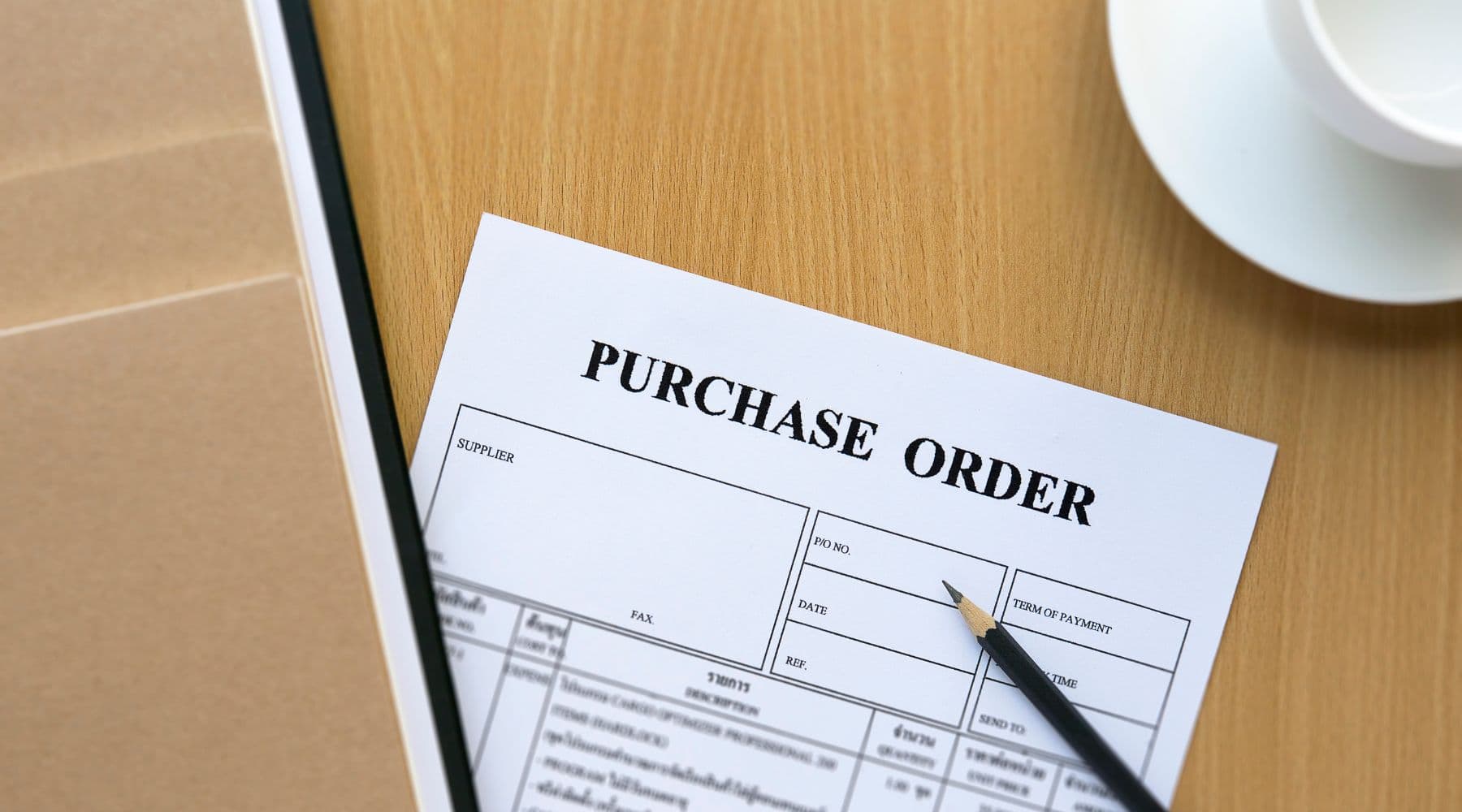In business purchasing activities, Purchase Order (PO) is an important document to confirm the need for purchasing and ensure transparency in transactions. However, not all businesses clearly understand What is a purchase order?, what does it include and how to manage it effectively.
The article below will help you clarify What is a purchase order?, the role of PO in the procurement process, and suggestions on how to optimize the order management process with the support of automation solutions from Bizzi.
1. What is a purchase order?
1.1 Definition of Purchase Order (PO):
A Purchase Order (PO) is a commercial document created by a buyer and sent to a supplier to confirm the desire to purchase goods or services under specific conditions. This is a legal document that acts as a contract between the two parties when accepted. In particular, the PO clearly states information about the product, quantity, unit price, delivery and payment terms.
Not only does PO help make the purchasing process transparent, it also serves as a basis for tracking order progress, supporting budget management and controlling financial risks for both buyers and sellers.
1.2 The importance of PO in business
A purchase order is not only a document confirming a purchase need, but also plays a vital role in supply chain management:
- Legalization of sales transactions: PO is a legal basis to protect the rights of both parties in the transaction.
- Minimize errors and disputes: Provide clear information to avoid misunderstandings about products, quantities or delivery terms.
- Financial support and internal control: Help sellers use PO as evidence for loans, while supporting buyers to control budget.
- Optimizing supply chain performance: It is the basis for tracking delivery progress, production planning and quality control.
1.3 Main purpose of the order
A purchase order is not just a sales document, but also an important tool in ensuring transparency, efficiency and control over the entire procurement process of a business. Here are the core objectives that a purchase order brings:
- Confirm purchase request: Is an internal document that represents an official purchasing decision.
- Legal binding between two parties: Once accepted by the supplier, the PO becomes a binding contract.
- Payment basis: Is the basis for buyers to compare and pay with suppliers.
- Order Process Management: Helps businesses track order status, detect and handle arising problems.
- Planning and forecasting support: Contribute to the development of appropriate production, inventory and budget plans.
- Minimize financial risk: Increase transparency and trust in cooperation with partners.
1.4 Basic Contents of a Purchase Order (PO)
A standard PO typically includes the following information:
- PO number and date: For easy tracking, storage and retrieval.
- Buyer and seller information: Company name, address, tax code, contact information.
- Product/service details: Product name, item code, quantity, unit price, total amount.
- Delivery terms: Estimated time, shipping method, delivery location, Incoterms if any.
- Payment terms: Payment methods, terms and other regulations.
- Special requests or additional terms: Such as discounts, freebies, special packaging.
- Signature confirmation: Of the representatives of both parties to ensure legality and consistency of content.
2. Benefits of using Purchase Order (PO)
A Purchase Order (PO) is not only a document expressing a purchase request but also an effective management tool, bringing many clear benefits to both the buyer and the seller. Below are specific benefits to help businesses understand clearly. What is a purchase order? and Why use PO in procurement process?:
2.1 Benefits for buyers:
Using a purchase order (PO) is not only an administrative step but also a strategic tool that helps businesses control transactions, optimize costs and ensure transparency in the procurement process. Below are the outstanding benefits that PO brings to buyers:
- Ensuring accuracy and transparency: PO acts as a legally binding document, helping the buyer and seller clearly agree on quantity, price, payment terms and delivery time. This helps to minimize misunderstandings or disputes that arise during the transaction process.
- Increase order management efficiency: With each order issued, businesses can easily track delivery progress, control processing status and systematically store information, thereby optimizing internal procurement processes.
- Effective cost control: The information on the PO helps the purchasing department compare prices between suppliers, ensuring the right unit with the best price and suitable for the budget is selected.
- Track and evaluate purchase performance: Businesses can compare POs with invoices, delivery notes and received goods to assess the level of compliance with supplier commitments, thereby improving efficiency and transparency in procurement.
2.2 Benefits for sellers:
Receiving and processing purchase orders (POs) helps sellers prepare goods accurately, ensure benefits and maintain professional transactions with customers.
- Receive clear and detailed orders: PO helps sellers grasp specific requirements from buyers about products, quantity, unit price and delivery time, thereby preparing goods accurately and on time.
- Legally protected: In case of disputes such as non-payment or non-receipt of goods, PO is a clear legal basis to help sellers protect their rights.
- Strengthen customer relationships: Professional working process through PO not only minimizes errors but also enhances trust, contributing to building a long-term cooperative relationship between the two parties.
Applying PO not only helps businesses understand clearly What is a purchase order?, but also helps them control the purchasing process more effectively, especially when combined with automation solutions from Bizzi to optimize order management and storage easily and transparently.
3. Common Types of Orders
Each order type is designed to suit different business purchasing needs, supporting cost control and effective supply chain management:
- Standard Purchase Order (PO): The most common order, stating product information, quantity, unit price and payment terms. Often used in regular purchase transactions.
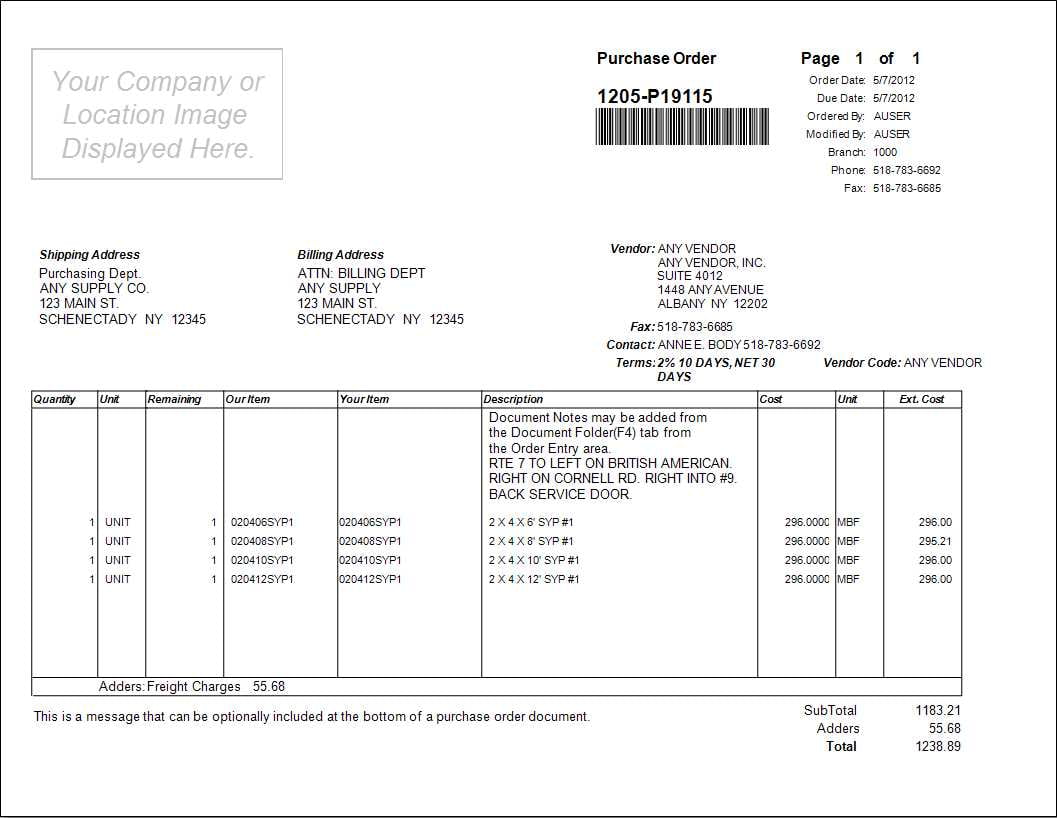
- Blanket Purchase Order (PO frame): Used when purchasing multiple times from a supplier within a specified period. Specifies general prices and conditions, without requiring details of each delivery.
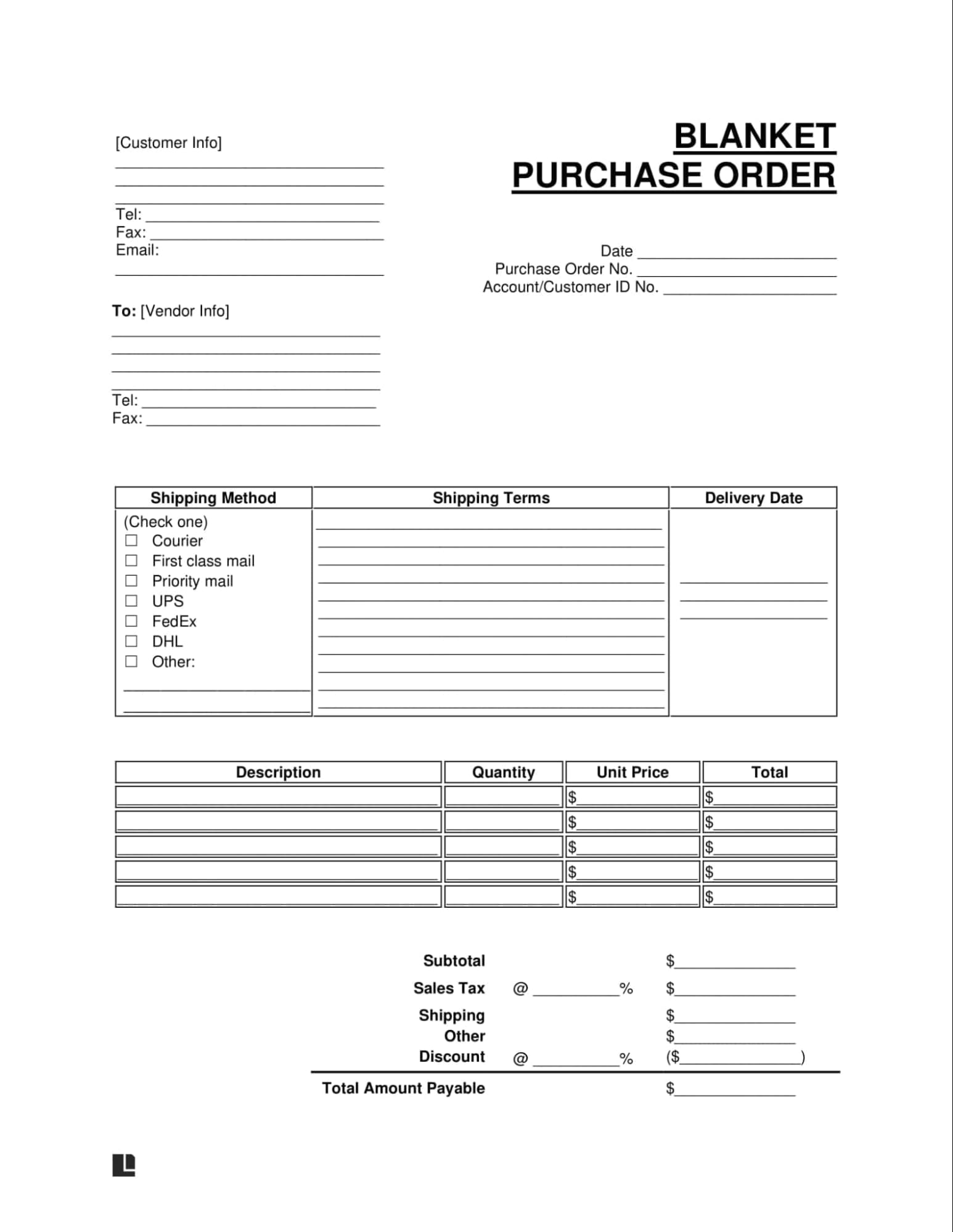
- Contract Purchase Order (PO contract): Applicable to long-term contract purchases. PO includes detailed signed terms to ensure binding.
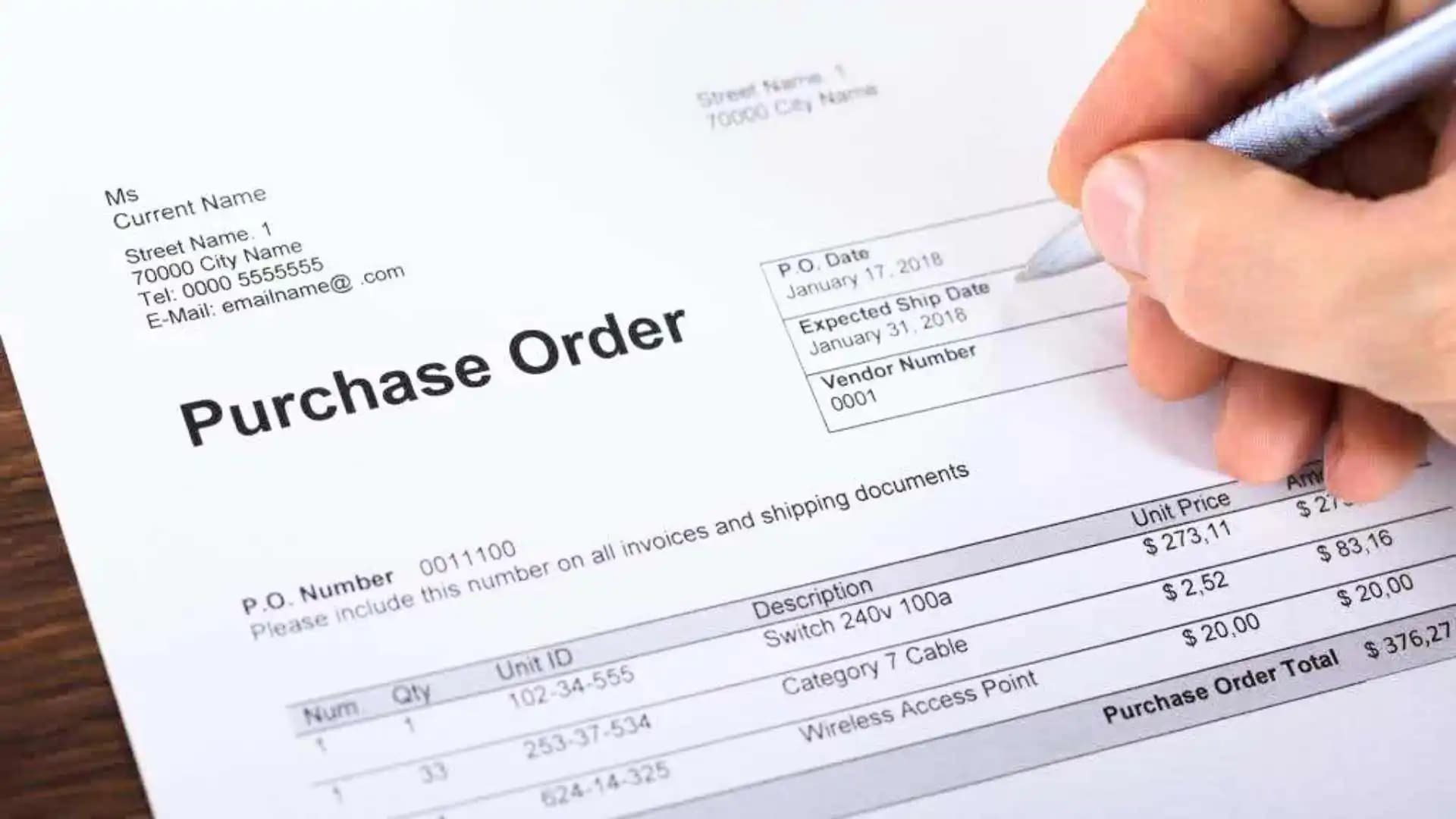
- Planned Purchase Order (PO plan): Prepared based on expected future purchasing needs, usually based on production plans. No specific delivery date required, flexible adjustment.
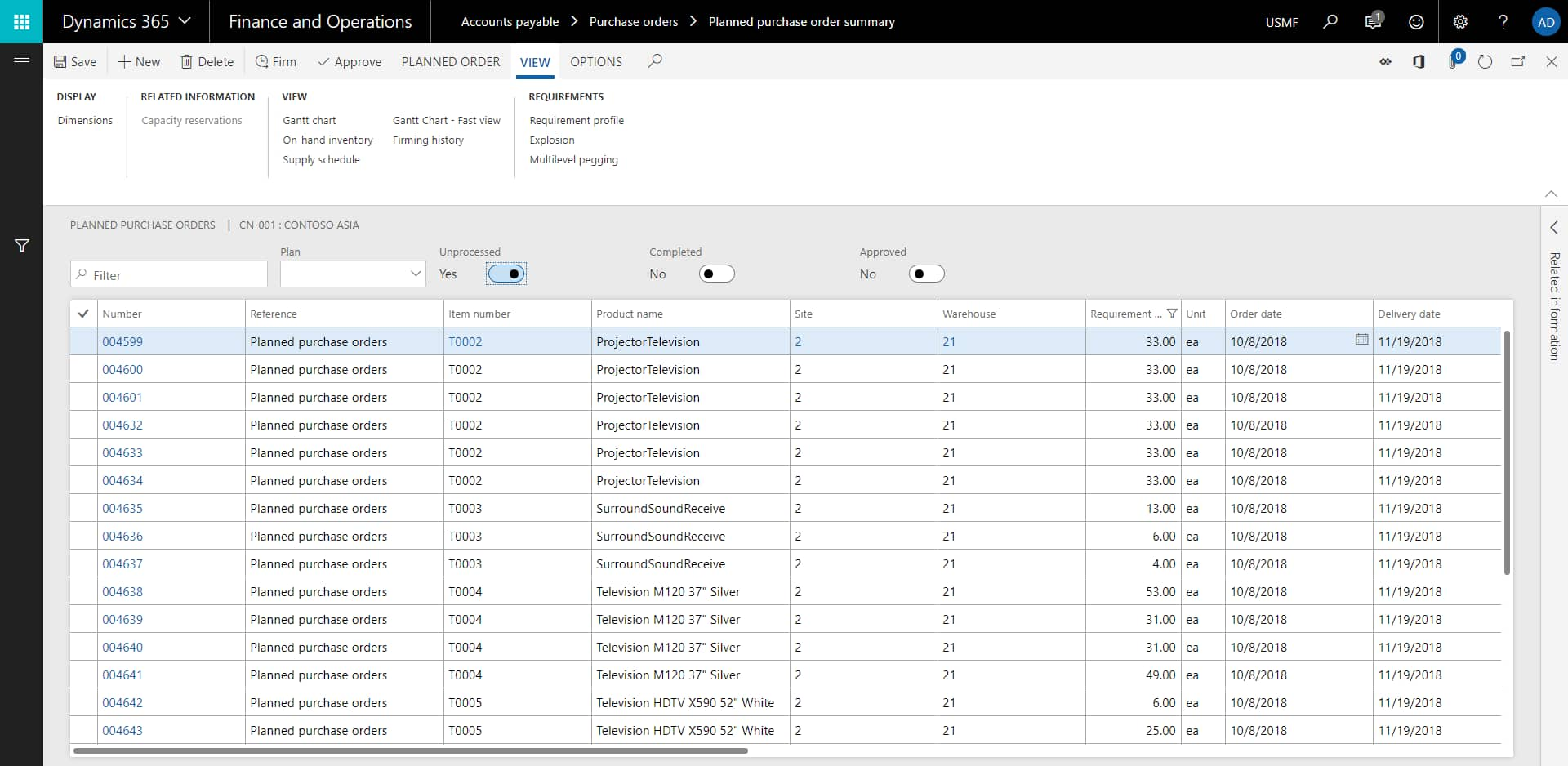
- Service Purchase Order (Service PO): Used when purchasing services instead of goods. PO specifies the service content, time of performance and cost with payment terms.
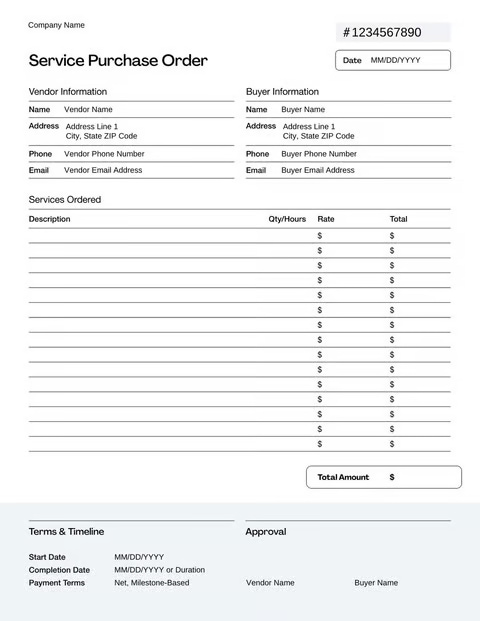
4. Distinguish Purchase Order (PO) from other documents
Purchase Order (PO) is an important document in procurement and supply chain management, but is often confused with related documents such as invoices, sales orders or purchase contracts. Below are the basic differences to help businesses clearly identify the role of each type of document:
- PO (Purchase Order) and Bill (Invoice): PO is issued by the buyer to initiate the purchasing process and propose the terms of sale, while invoice is a request for payment issued by the seller after the goods or services have been delivered. PO serves as confirmation of the purchase demand, while invoice is the basis for payment. The invoice should reference the PO number to ensure consistency between the agreement and the actual delivery.
- PO and Sales Order: PO is a document issued by the buyer to demonstrate the commitment to purchase, legally binding to the seller. In contrast, Sales Order is an internal document created by the seller after receiving PO to track and execute the order, not sent to the customer.
- PO, Proforma Invoice (PI) and Sales Contract (SC): PO is a purchase offer from the buyer, which is usually not highly legal if not accompanied by a contract. PI is a detailed quotation from the seller, showing the basic terms of the transaction and can be used as a basis for opening an LC (letter of credit). Meanwhile, SC is the official sales contract, the strongest legal binding, fully stipulating the rights and obligations of both parties.
Note: Although a purchase order may be considered evidence of purchase, in legal practice a PO cannot replace a sales contract. Relying solely on a PO without a clear contract can create difficulties in resolving disputes.
5. Effective Purchase Order (PO) usage and management process
To ensure that the procurement of goods and services takes place transparently and effectively, businesses need to develop a process for using and managing Purchase Order (PO) closely. Below are common steps in the process and methods to optimize PO management efficiency.
5.1 PO usage process in business:
Using a Purchase Order (PO) according to a standard process helps businesses effectively control purchasing activities, ensure transparency, save costs and limit risks. Below are the basic steps in the process of using PO in a business:
- Purchase requirements: Human resources, specialized departments or warehouses create purchase requests with complete information about type, quantity, unit and reason for purchase.
- Confirm request: The request is forwarded to the appropriate management or department for review of necessity, budget, and approval.
- Create purchase order (PO): Once approved, the purchasing department creates a formal PO with information about the goods, payment terms, and delivery time.
- PO Approval: PO is reviewed and approved for the final time by the finance department or purchasing manager.
- Send PO to supplier: PO is sent to the supplier via email, management system or hard copy, with clear terms attached.
- Confirm PO from supplier: Supplier confirms agreement to comply with PO content or proposes modifications if necessary.
- Delivery and receipt: Goods are delivered to the warehouse according to PO; the recipient checks the quantity, quality and makes a delivery record.
- Payment processing: The accounting department compares POs, invoices and delivery notes to make payments on time and at the correct value.
5.2 How to effectively manage PO for businesses:
Purchase orders (POs) are important documents in the business's purchasing and payment cycle. Scientific PO management not only helps to control the budget better but also minimizes risks in the transaction process with suppliers. Below are some optimal methods for businesses to effectively manage POs:
- Define clear processes: Establish a standard process for PO creation, approval, and tracking to reduce errors and increase consistency.
- PO management software system integration: Software applications help automate PO processing steps, synchronize data with accounting, and increase traceability and control.
- PO Validation and Approval: Apply hierarchical approval authority to ensure each PO is valid, on budget, and compliant.
- Schedule tracking and reminders: Record important milestones (deliveries, payments) to track progress and alert you when there are delays.
- Optimize the periodic process: Review and adjust PO implementation steps to eliminate redundant operations, save costs and time.
Understanding What is a purchase order? and building an effective PO management process not only helps businesses control costs well but also increases transparency in the entire procurement process.
6. Optimize Order management with 3-way Reconciliation solution from Bizzi
When researching What is a purchase order?, not only need to understand the concept and role of this document, but businesses also need to have a tool to support effective management of the entire related process - from issuing PO to payment and reconciliation. In the business procurement cycle, the Purchase Order (PO) plays the role of the initial document, the basis for monitoring progress, controlling the budget and making payments. However, if you only stop at issuing PO without controlling the correct match between the order, invoice and warehouse receipt, businesses are at risk of facing errors, losses and financial disputes.
Bizzi's 3-Way Matching solution helps businesses automate and standardize order control throughout the entire procurement cycle, from issuance to payment completion.
Bizzi is not just accounting software, it is Smart financial assistant - accounting Integrating AI and RPA technology, supporting businesses to automate the entire collection and payment process, control documents and manage orders effectively and transparently.
6.1. 3-way reconciliation helps control orders more effectively
Bizzi applies automation technology to compare information between three documents: purchase order (PO), purchase invoice (Invoice) and warehouse receipt (Goods Receipt). When these data are automatically compared, businesses can easily control the status of order fulfillment, promptly detect discrepancies such as:
- The unit price, quantity or type of goods on the invoice does not match the content of the purchase order.
- Actual goods in stock are not in sufficient quantity, different from the information on the order or invoice.
- Delivery or payment terms differ from those agreed upon in the purchase order.
Automated reconciliation helps businesses reduce risks arising in payments, preventing incorrect payments or late payments due to lack of control.
6.2. How does Bizzi help businesses manage and reconcile orders?
Bizzi offers a smart 3-way reconciliation solution that allows for automatic checking and processing of common reconciliation cases in the purchasing process:
- 1PO – 1INV – 1GR;
- 1PO – nINV – nGR;
- nPO – 1INV – nGR;
- nPO – nINV – nGR
With the ability to automatically extract data from electronic invoices, supplier emails or attachments, Bizzi helps businesses eliminate manual data entry, increasing speed. order processing and reduce errors in managing purchasing information.
In addition, data on orders, invoices and warehouse receipts are all closely linked in Bizzi's system, helping the purchasing, accounting and internal control departments easily retrieve, reconcile and track all transactions in a transparent and accurate manner.
6.3. Benefits of businesses when applying Bizzi to order management
When applying Bizzi's solution to order management, businesses achieve practical values:
- Control order progress and validity throughout the entire procurement cycle.
- Minimize the risk of discrepancies or fraud related to quantities, unit prices and delivery terms.
- Increase reconciliation efficiency, save time and operating costs.
- Support budget management and auditing with complete and accurate data reconciliation.
- Standardize and automate order approval, control, and payment processes.
To improve the efficiency of invoice management as well as automate the financial and accounting processes of the business. Register to experience Bizzi's comprehensive solution suite today!
- Link to register for a trial of Bizzi products: https://bizzi.vn/dang-ky-dung-thu/
- Schedule a demo: https://bizzi.vn/dat-lich-demo/
Conclude
Understanding What is a purchase order? and properly applying PO management processes not only helps businesses better control costs and goods but also minimizes risks in procurement. In the context of digital transformation, integrating solutions such as Bizzi will help businesses automate the approval, storage and reconciliation of POs accurately, saving time and optimizing operational efficiency.
